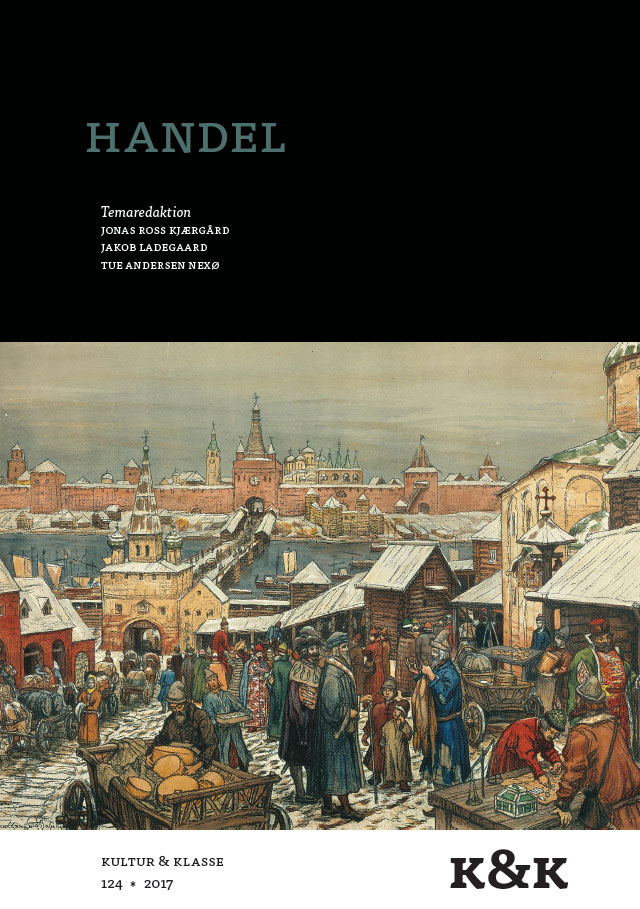Fremtidshandel: Fiktionen i den finansielle spekulations tidsalder
DOI:
https://doi.org/10.7146/kok.v45i124.103922Nøgleord:
Finans, fremtid, algoritmer, fiktionResumé
Robert Harris’ novel The Fear Index (2012) takes place over 24 hours on May 6 2010 where the life of eccentric former physicist Alex Hoffmann – now hedge fund owner and developer of trading algorithms – is threatened while the market collapses. It is unclear whether the trader suffers from a schizophrenic psychosis or whether his algorithm VIXAL-4 has actually overpowered him. The fund’s portfolio is “all out of shape” and Hoffmann’s personality “had grown lopsided”, as the algorithmic monster prevails via the complete breakdown of both the market and its maker. Via an analysis of The Fear Index and its references to romantic literature, the article examines the consequences of trade via algorithmic operations beyond human perception and cognition for the relation between cultural imagination and the future.
Referencer
Borch, Christian. ”High-frequency trading, algorithmic finance and the Flash Crash: reflections on eventalization”. Economy and Society 45.3-4 (2016): 350-378.
Clark, T.J. ”For a Left with No Future”. New Left Review 74 (2012): 53-75.
De Boever, Arne. ”Creatures of Panic – Financial Realism in The Fear Index”. European Journal of English Studies 19.1 (2015): 24-38.
Gapper, John. ”The Fear Index”. The Financial Times. 23. september 2011. 14. august 2017 https://www.ft.com/content/dc1eaf2a-e04a-11e0-ba12-00144feabdc0.
Harris, Robert. Frygtens Indeks. København: Lindhardt og Ringhof, 2012.
Hoffmann, E.T.A. ”Die Automaten”. Poetische Werke in sechs Bänden. Band 3. Berlin: Aufbau Verlag, 1963. 411-445.
MacKenzie, Donald. ”Mechanising the Merc – The Chicago Mercantile Exchange and the Rise of High-Frequency Trading”. Technology and Culture 56.3 ( 2015): 646-675.
Nietzsche, Friedrich. Moralens Oprindelse. København: Det lille forlag, 1993.
Shelley, Mary. Frankenstein, eller Den moderne Prometheus. København: Rosinante, 2014.
Shelley, Mary. Frankenstein: Annotated for Scientists, Engineers, and Creators of All Kinds. Cambridge, MA: MIT Press, 2017.
Vogl, Joseph. Das Gespenst des Kapitals. Zürich: Diaphanes, 2010.
Downloads
Publiceret
Citation/Eksport
Nummer
Sektion
Licens
Tidsskriftet følger dansk ophavsret.





